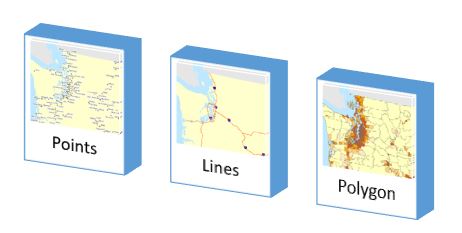Spatial data can be referred to as geographic data or geospatial data. Spatial data provides the information that identifies the location of features and boundaries on Earth. Spatial data can be processed and analysed using Geographical Information Systems (GIS) or Image Processing packages.
Types of data
There are different types of spatial data which can be split into two categories:
Feature Data (vector data model) = entity of the real world e.g. a road, a tree or a building these can be represented as a point, line or polygon in space
Coverage Data (raster data model) = mapping of continuous data in space expressed as a range of values e.g. a satellite image, an aerial photograph, a Digital Surface Model (DSM) or Digital Terrain Model (DTM), text file with daily precipitation values. Coverage data can be represented as a grid or triangulated irregular network
Spatial data is analysed to create ellipsis-drive.com meaningful information for a particular application or purpose. The communication of information from the spatial analysis is often represented as a map produced with a specific audience in mind.
Accessing Spatial Data
It is now common place for spatial data to be provided through the web. There are standards for delivery of spatial data on the web provided by the Open Geospatial Consortium (OGC). These standards include:
- Web Map Services (WMS) – accessing a portrayal of spatial data on the web e.g. map
- Web Coverage Services (WCS) – downloading coverage data
- Web Feature Services (WFS) – downloading feature data
There is a range of academic services that provide spatial data and OGC services e.g.
- Landmap hosted at Mimas,
- Digimap hosted at EDINA
- Sources of Spatial Data
- Discovering Geographic Data. …
- Exploring GIS Data. …
- General-Purpose GIS Data Resources. …
- OpenStreentMap The People’s Map. …
- GIS Data from Libraries. …
- Data from National and International Mapping Agencies. …
- More Global Sources. …
- Georeferenced Images.
FME for Spatial Data
FME, which stands for feature manipulation engine, supports over 450 formats and applications to make it easier for you to work with the data you have in the software of your choice. There are a variety of spatial transformations tasks that can be easily implemented via drag-and-drop transformers and even more data integration tools to help you create the exact dataset you want. FME was built specifically for transforming spatial data and has always been the best integration tool for working with it. Spatial format structures and models are built directly into the software, so you don’t have to spend time on the mundane, tedious components of data integration.
Safe Software, the makers of FME, are leaders in the technology world that strive to stay one step ahead of the data integration trends. FME is continuously upgraded to ensure it is supporting the newest formats, updated versions of data formats, and large amounts of data. Gone is the idea that individual departments must work in their own data silos, with IT structures limiting the company’s potential to truly work as one. Data should be able to flowfreely no matter where, when, or how it’s needed.

